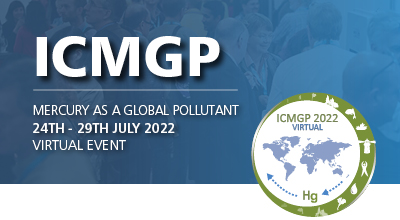| Abstract Title: | Assessing Community Risk to Mercury Contamination Through Fish Consumption in Three Exposure Scenarios |
| Presenter Name: | Arioené Vreedzaam |
| Company/Institution: | University of Suriname |
| Session: | Mercury in Artisanal Gold Mining |
| Co-Authors: | Arioené Vreedzaam, Paul Ouboter, Ryan Lepak, Sarah Janssen, Ashna Hindori-Mohango, Anisma Gokoel, Maureen van Dijk, Wilco Zijlmans, Maureen Lichtveld, Jeffrey K. Wickliffe |
Abstract Information :
In 2018 and 2021, mercury analyses of fish and human hair and blood from three types of Surinamese communities: sustenance indigenous, quasi-sustenance tribal and urban each with unequal reliance on local fisheries and uneven exposure to anthropogenic mercury from artisanal gold mining (ASGM).These analyses were conducted in a sub cohort of the Caribbean Consortium of Research in Environmental and Occupational Health(CCREOH) environmental epidemiologic study of approximately 1200 mother/child dyads. First, we focused on assessing mercury dynamics in fish directly and indirectly exposed to mercury from ASGM activities and surprisingly did not show predictable differences in mercury burden or isotope values. Next, we focused on hair-data from Surinamese communities and found that mercury burdens were greatest in the indigenous communities (x? = 8.6 ñ 1.2ppm; 2SE) that were entirely reliant on local fisheries while ASGM-influenced areas were unexpectedly lower in mercury burden (x? = 3.2 ñ 1.1ppm; 2SE ? Urban 1.2 ñ 0.2; 2SE). Mercury isotope values confirmed that indigenous communities obtain mercury from consumption of local freshwater fish (?199Hg x? = -0.13 ñ 0.09?; 2SE), but that ASGM (?199Hg x? = 0.82 ñ 0.20?; 2SE) and urban (?199Hg x? = 0.50 ñ 0.10?; 2SE) areas were reliant on a mix of local and non-local fishes which both lowered their burden and decoupled their hair isotope values from those of resident freshwater fish. The indigenous communities simultaneously had the highest percent of mercury as methylmercury in their hair and the lowest percent of methylmercury in their blood. Meanwhile, the decreased percent methylmercury in hair of the ASGM communities and urban areas suggests the use of mercury-containing products either in personal care or through other non-fish sources in the diet. These results reveal additional complexity in terms of sources of human exposure and mercury dynamics in ASGM impacted regions of the world.



